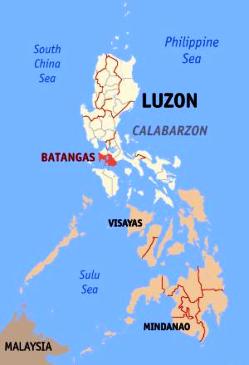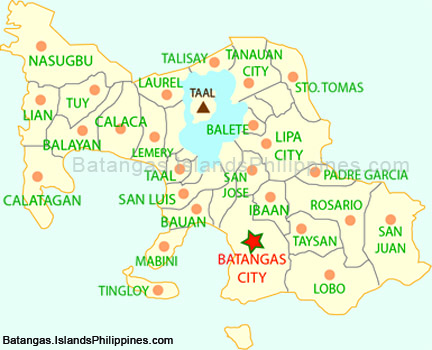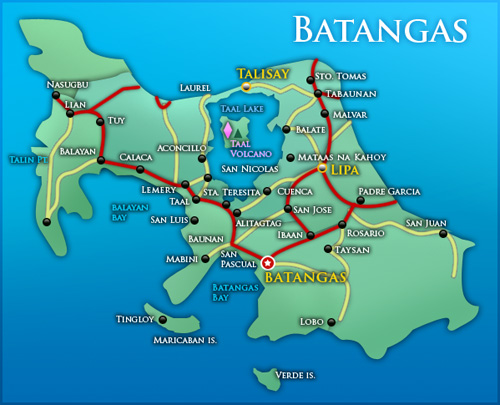
-
МјРЇСІИёСЖШИМі
-
 И№ОЫ КИОЫ Йъ ЗЛЦЎЧЯБт~ ИЎСЖЦЎ ПЙОрБюСі
И№ОЫ КИОЫ Йъ ЗЛЦЎЧЯБт~ ИЎСЖЦЎ ПЙОрБюСі 89,453
89,453 -
 [ЧЪИЎЧЩ ММКЮ] ФЋИ№ХзНК ПЉЧр 100Йш СёБтБт
[ЧЪИЎЧЩ ММКЮ] ФЋИ№ХзНК ПЉЧр 100Йш СёБтБт 48,880
48,880 -
 ИЖДвЖѓ НУГЛ - ИЎРп АјПјСЄКИ. (ЛчСј 16Рх ЦїЧд)
ИЖДвЖѓ НУГЛ - ИЎРп АјПјСЄКИ. (ЛчСј 16Рх ЦїЧд) 30,788
30,788 -
 ММКЮРЧ СіПЊСЄКИ15,528
ММКЮРЧ СіПЊСЄКИ15,528 -
 ИЖДвЖѓ БйБГ - ЕћАЁРЬЕћРЬ ПЉЧр СЄКИ14,340
ИЖДвЖѓ БйБГ - ЕћАЁРЬЕћРЬ ПЉЧр СЄКИ14,340 -
 [ЧЪИЎЧЩ ММКЮ/ИЗХК] ШЃХк МїЙк ПфБн Йз СЄКИ13,318
[ЧЪИЎЧЩ ММКЮ/ИЗХК] ШЃХк МїЙк ПфБн Йз СЄКИ13,318 -
 КИЖѓФЋРЬРЧ И№Еч И№НРРЛ КММі РжДТ ЛчСјУИ.13,131
КИЖѓФЋРЬРЧ И№Еч И№НРРЛ КММі РжДТ ЛчСјУИ.13,131 -
 ИЖДвЖѓ БйБГ - ЦХЛѓЧб ЦјЦї ПЉЧрСЄКИ12,829
ИЖДвЖѓ БйБГ - ЦХЛѓЧб ЦјЦї ПЉЧрСЄКИ12,829 -
 [ММКЮ-ЙшМБТјРх] МБЙкШИЛч РќШЙјШЃПЁПф~12,443
[ММКЮ-ЙшМБТјРх] МБЙкШИЛч РќШЙјШЃПЁПф~12,443 -
 ИЖДвЖѓ СіПЊ(ПЁИЃЙЬХИ -ИЛЖѓХз)РЧ СіЕЕ/ЧбБЙ РННФСЁ/МюЧЮИє12,110
ИЖДвЖѓ СіПЊ(ПЁИЃЙЬХИ -ИЛЖѓХз)РЧ СіЕЕ/ЧбБЙ РННФСЁ/МюЧЮИє12,110
Batangas Map



Batangas is a first class province of the Philippines located on the southwestern part of Luzon in the CALABARZON region. Its capital is Batangas City and it is bordered by the provinces of Cavite and Laguna to the north and Quezon to the east. Across the Verde Island Passages to the south is the island of Mindoro and to the west lies the South China Sea. Poetically, Batangas is often referred to by its ancient name Kumintang.
Batangas is one of the most popular tourist destinations near Metro Manila. The province has many beaches and is famous for excellent diving spots including Anilao in Mabini, Sombrero Island in Tingloy, Ligpo Island in Bauan, these areas more popularly known as Anilao. Matabungkay in Lian, Punta Fuego in Nasugbu, Calatagan and Laiya in San Juan.
Batangas is also where Taal Volcano, one of the Decade Volcanoes is located. It is also where the Taal Heritage town lies, a small picturesque town that has ancestral houses and structures dating back to the 19th century.
The first recorded name of the Province was Kumintang, after the Datu who inherited the dominion from Datu Balensusa. Its centre, the present day Balayan, was the most progressive town of the Province and the traditional centre of governance. Later, as the eruption of the Taal Volcano destroyed a significant portion of the town, the provincial centre was transferred to Taal, which was then called Bonbon and the name of the province was changed after that of the town.
The term batangan means a raft, the people used so that they could fish in the nearby Taal Lake. It also meant the numerous logs found in the Calumpang River, the body of water that runs through the northeastern portion of the town and assumes the shape of a tuning fork.
The dialect of Tagalog spoken in the province closely resembles the Old Tagalog spoken before the arrival of the Spanish. Hence the Summer Institute of Linguistics called this province the Heartland of the Tagalog Language. A strong presence of the Tagalog culture is clearly visible to the present day.
Linguistically Batangueños are also known for their unique affectation of often placing the particles eh or ga (equivalent of particle ba Filipino), usually as a marker of stress on the sentence, at the end of their spoken sentences or speech; for example: "Ay, oo, eh!" ("Aye, yes, indeed!"). Some even prolong the particle 'eh' into 'ala eh', though it really has no meaning in itself.
In the recent years, waves of migration from the Visayas had brought significant number of Visayans to the province. There are also a few who can speak Spanish, since Batangas was an important centre during the colonial period.
Batangas also has one of the highest literacy rates in the country at 96.5%, wherein the males have a slightly higher literacy rate at 97.1% than females with 95.9%.Combined average of literacy is 96%.
Batangas Port and STAR
Batangas City is the principal port for ferry access to Mindoro, Tablas, Romblon, and other islands. Montenegro Lines is the largest of a number of passenger shipping companies operating out of Batangas. Liquid natural gas and petroleum tankers offload at Batangas in sizeable quantity.On January 19, 2008, Phase 2 of the Batangas City International Container Port was opened by the Philippines President, and is operated by the Philippine Ports Authority).On the same day, President Gloria Macapagal-Arroyo also inspected a major road project in Southern Tagalog. She then inspected the P1.5-billion, 19.74 kilometer Southern Tagalog Arterial Road (STAR Tollway), Stage II-Phase 1 connecting Lipa and Batangas and the South Luzon Expressway (SLEX) road widening, expansion and the STAR Tollway development projects in Batangas.
Prehistory
Long before the arrival of the Spaniards in the Philippines, large centers of population already thrived in Batangas. Native settlements lined the Pansipit River, a major waterway. The province had been trading with the Chinese since Yuan Dynasty until first phase of Ming Dynasty in the 13th and 15th century. Inhabitants of the province were also trading with Japan and India.
Archeological findings, show that even before the settlement of the Spaniards in the country, the Tagalogs, especially the Batangueños, had a very high level of civilization. This was shown by some jewelry, made from a chambered nautilus' shell, where some tiny holes were drilled by some tube. The way it was drilled shows that early Batangueños had an idea of what is beautiful.
Later, the pre-historic Batangueños was influenced by India as shown in some ancient potteries. In fact, a Buddhist image was reproduced in mould on a clay medallion in bas-relief from the Municipality of Calatagan. According to experts, the image in the pot strongly resembles the iconographic portrayal of Buddha in Siam, India and Nepal. The pot shows Buddha Amithaba in the tribhanga pose inside an oval nimbus. Scholars also noted that there is a strong Mahayanic orientation in the image, since the Boddhisattva Avalokitesvara was also depicted.
One of the major archeological finds was in January 1941, where 2 crude stone figures were found in Palapat in the Municipality of Calatagan. They were later donated to the National Museum. Unfortunately, one of them was destroyed during World War II.
Eighteen years later, a grave was excavated in the nearby Punta Buaya. Once again, it showed that early Batangueños have an appreciation of art, since pieces of brain coral were carved behind the heads of the 12 remains that were found. The site was named 'Likha' (meaning 'Creature'). The remains were accompanied by furniture that could be traced as early as the 14th century. Potteries, as well as bracelets, stoneware and metal objects were also found in the area, suggesting that the people who lived there had an extensive contact with people from as far as China.
The presence of believed also suggested that prehistoric Batangaueños believed in the idea of life-after-death, since someone might need a plate where he would eat or chalices where he could drink. This also related the Batangueños to its neighbors in Asia, where it was a custom to bury some furniture with the dead.
Like the nearby tribes, the Batangan or the early Batanueños were non-aggressive people. Partly because most of the tribes in the immediate environs are related to them by blood. However, when there is no choice but to defend your life, Batangans would use the bakyang (bows and arrows), the bangkaw (spears) and the suwan (bolo).
Another proof of civilization from the Batangans was the presence of religion. Though it was highly superstitious, such as the use of amulet (talisman), it showed that these people believed in the presence of higher beings and other things unseen. Thus, there is a strong connection between the Batangans and nature.
Although it is widely accepted that the term Tagalog came from the word 'Taga-Ilog' o river Dwellers, (referring to the Pasig River), Wang The-Ming pointed out in his writings that Batangas was the real centre of the Tagalog Tribe, which he then identified as Ma-yi. According to this Chinese Annals, Ma-yi had its centre in the Province and extends to as far as Cavite, Laguna, Rizal, Quezon, Bataan, Bulacan, Mindoro, Marinduque, Nueva Ecija, Some parts of Zambales and Tarlac. However, many historians interchangeably use the term Tagalog and Batangueño.
Henry Otley Beyer, an American archaeologist, also showed in his studies that the early Batangueños have a special affinity with the precious stone known as the jade. In fact, the named the Late Paleolithic Period of the Philippines as the Batangas Period in recognition of the multitude of jade found in the excavated caves in the province. Beyer identified that the jade-cult reached the Province as early as 800 BC and lasted until 200 BC.
- ЁЄ
- ЁЄ
- ЁЄ
- ЁЄryWvMVxeet
- ЁЄryWvMVxeet
- ЁЄryWvMVxeet\'\"\\(
- ЁЄryWvMVxeetщ\'\"\\(
- ЁЄryWvMVxeet
- ЁЄryWvMVxeet
- ЁЄryWvMVxeet
- ЁЄryWvMVxeet
- ЁЄryWvMVxeet
- ЁЄryWvMVxeet
- ЁЄryWvMVxeet
- ЁЄryWvMVxeet















 ЧЪРкДхФФ ОпАЃЛѓДу ПРЧТ
ЧЪРкДхФФ ОпАЃЛѓДу ПРЧТ 12ГтПЌМг МвКёРкИИСЗ 1РЇ
12ГтПЌМг МвКёРкИИСЗ 1РЇ
 ГЛАд ИТДТ ОюЧаПј УЃБт
ГЛАд ИТДТ ОюЧаПј УЃБт
 ИЎОѓ ЧаБГ ЙцЙЎБт
ИЎОѓ ЧаБГ ЙцЙЎБт
 СжИЛПЁ ГЛАЁ ОЕ КёПыРК?
СжИЛПЁ ГЛАЁ ОЕ КёПыРК? УжАэАЁМККё РЬКЅЦЎ СёБтБт
УжАэАЁМККё РЬКЅЦЎ СёБтБт
 ЧіСіПЁМЕЕ ЧЪРкДхФФ!
ЧіСіПЁМЕЕ ЧЪРкДхФФ! ЧіСіПЁМ АЁДЩЧб
ЧіСіПЁМ АЁДЩЧб









 ЧЪРк ЦЏБо Ч§ХУ! ФСНУОюСі МКёНК
ЧЪРк ЦЏБо Ч§ХУ! ФСНУОюСі МКёНК
































